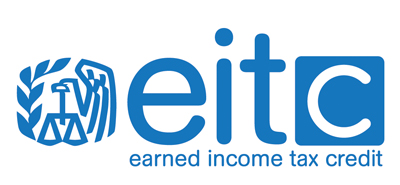- November 18, 2015
- Posted by: Hector Trevino
- Category: Finance & accounting, Noticias, Uncategorized

Earned Income Tax Credit Basics
The Earned Income Tax Credit (EITC) is one of the most significant tax credits available in the entire IRS tax code. It is also simultaneously one of the most complicated and popular tax credits as well. So I thought I should provide a long overdue basic overview of what the Earned Income Credit is, including qualifications, qualified children rules, maximum amount, income limits, income tables, calculators, and more.
What is the Earned Income Tax Credit?
Let’s start with a basic description of the Earned Income Tax Credit, which is also commonly referred to as the EITC, Earned Income Credit, and EIC. The EITC is a significant tax credit for lower and lower-middle income taxpayers that rewards earned income, particularly for those with children. It was first enacted under the Ford administration in 1975 and was built with the dual purpose of incentivizing the earning of income and reducing poverty. Its popularity and impact has led to bi-partisan political support and expansion a number of times since it was created, making it one of the largest social welfare programs in the United States today.
The Earned Income Tax Credit is a refundable tax credit, which means that it not only can be subtracted from taxes owed, but can be refunded to the taxpayer if taxes are not owed.
How Much is the Earned Income Credit?
The EITC can be worth as much as $6,318 for the 2017 tax year and $6,444 for the 2018 tax year. However, the credit amount varies significantly depending on tax filing status, number of qualifying children, and income earned. It is phased in and then phased out at certain income thresholds.
Earned Income Tax Credit Qualifications
There are a number of qualifications that must be met in order for a taxpayer to be eligible for the Earned Income Tax Credit.
1. You must first have taxable “earned income”. Taxable earned income includes any of the following:
- Wages, salaries, tips, and other taxable employee pay
- Union strike benefits
- Long-term disability benefits received prior to minimum retirement age
- Net earnings from self-employment if:
- You own or operate a business or a farm or
- You are a minister or member of a religious order (special rules apply)
- You are a statutory employee and have income. (statutory employees are contractors and will have a box on their W2 designating them as ‘statutory’)
Taxable earned income does not include:
-
Pay received for work while an inmate in a penal institution
-
Interest and dividends
-
Retirement income
-
Social security
-
Unemployment benefits
-
Alimony
-
Child support
2. You, your spouse, and any qualifying child must have an eligible Social Security # that is valid for employment.
3. You can be any filing status except “married filing separately”.
4. You have qualified children, OR
- You (and your spouse if you file a joint return) meet all the EITC basic rules AND
- You (and your spouse if you file a joint return) cannot be claimed as a dependent or qualifying child on anyone else’s return, AND
- You (or your spouse if you file a joint return) are between 25 and 65 years old at the end of the tax year, usually Dec. 31.
5. Your income falls within the eligible income range (highlighted below).
6. Your tax year investment income must be $3,450 or less for the year.
7. Must not file Form 2555, Foreign Earned Income or Form 2555-EZ, Foreign Earned Income Exclusion. In other words, you must have lived in the U.S. for more than half of the year.
Earned Income Credit Qualifying Children
While it is possible to qualify for the Earned Income Credit without children, the amount of the credit increases with each qualified child. Qualified children must meet each of the eligibility tests:
Relationship Test:
- Your son, daughter, adopted child, stepchild, foster child or a descendant of any of them such as your grandchild
- Brother, sister, half brother, half sister, step brother, step sister or a descendant of any of them such as a niece or nephew
Age Test:
- At the end of the filing year, your child was younger than you (or your spouse if you file a joint return) and younger than 19
- At the end of the filing year, your child was younger than you (or your spouse if you file a joint return) younger than 24 and a full-time student
- At the end of the filing year, your child was any age and permanently and totally disabled
Residency Test:
Child must live with you (or your spouse if you file a joint return) in the United States for more than half of the year
Joint Return:
The child cannot file a joint return for the tax year unless the child and the child’s spouse did not have a separate filing requirement and filed the joint return only to claim a refund.
Tiebreaker Rules:
Note that only one person can claim a specific qualified child (i.e. in cases of divorce). There are special “tiebreaker rules“.
Earned Income Credit Table for 2017 Income Limits & Maximum Amounts
In addition to the aforementioned qualifications, you must have earned income and adjusted gross income (the greater of which is used) within certain income limits in order to qualify for the earned income credit.
Here is the Earned Income Tax Credit table for the 2017 tax year:
The EITC maximum credit amounts for 2017 are:
- $6,318 with three or more qualifying children
- $5,616 with two qualifying children
- $3,400 with one qualifying child
- $510 with no qualifying children
Earned Income Credit Table for 2018 Income Limits & Maximum Amounts
And here is the Earned Income Tax Credit table for the 2018 tax year:
The EITC maximum credit amounts for 2018 are:
- $6,444 with three or more qualifying children
- $5,728 with two qualifying children
- $3,468 with one qualifying child
- $520 with no qualifying children
Can you claim both the EITC and Child Tax Credit in the Same Year?
Although I have not personally done this, it is my understanding that you can claim both the Earned Income Credit and Child Tax Credit within the same year if you meet all of the qualifications for each. In other words, they are not mutually exclusive credits.
Earned Income Credit Calculator
The Earned Income Credit is automatically calculated in IRS form 1040, however, there are some alternatives if you’d like to play with the numbers.
As noted before, the EITC is one of the most complicated tax credits in the entire tax code, with a whole host of qualifying criteria. If you’d like to use a calculator to determine the amount of credit you might be eligible for, there are a few EITC calculator options:
- IRS EITC assistant: the most comprehensive – the EITC goes through all of the qualifying criteria to first determine eligibility (make sure you select the appropriate tax year).
- Bankrate EITC calculator: gives you a quick and dirty number, not taking into account eligibility.
For More Information on the Earned Income Credit
There are even more special rules and qualifications that what I’ve highlighted here, so you’ll need to do your due diligence. For more information, visit the IRS EITC topic and EITC Central.
Contact or Visit Us Today:
1700 Old Norcross Rd. Suite 2 Lawrenceville, GA 30046
770-277-3830
THE DESTINATION FOR ALL YOUR EXPERT FINANCIAL ADVICE AND SERVICES
